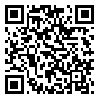Tue, Jul 1, 2025
[Archive]
Volume 35, Issue 1 (1-2021)
Med J Islam Repub Iran 2021 |
Back to browse issues page
Download citation:
BibTeX | RIS | EndNote | Medlars | ProCite | Reference Manager | RefWorks
Send citation to:



BibTeX | RIS | EndNote | Medlars | ProCite | Reference Manager | RefWorks
Send citation to:
Saravani S, Karimkoshteh A, Samaei Rahni M, Kadeh H. Cytomorphometric Assessment of Buccal Mucosa Cells and Blood Sugar Status in Diabetic Patients in Zahedan (2019). Med J Islam Repub Iran 2021; 35 (1) :1142-1147
URL: http://mjiri.iums.ac.ir/article-1-7439-en.html
URL: http://mjiri.iums.ac.ir/article-1-7439-en.html
Oral and Dental Disease Research Center, Department of Oral and Maxillofacial Pathology, Faculty of Dentistry, Zahedan University of Medical Sciences, Zahedan, Iran , Kadeh@zaums.ac.ir
Abstract: (1262 Views)
Background: Diabetes mellitus is one of the major global health threats. Diabetes can cause adverse cytopathological changes in cells and predispose them to pathological lesions. The present study aimed to investigate the cytopathological changes of oral mucosal cells in type 1 and 2 diabetes patients and its relationship with blood sugar status.
Methods: This study descriptive-analytical was performed on 40 type-1 diabetes patients, 40 type-2 diabetic patients, and 20 non-diabetic individuals (control group) with simple sampling in Zahedan (2019). Their buccal mucosa was sampled by a cytobrush and the microscope slides were prepared with Papanicolaou staining. The nuclear and cytoplasmic area and cytoplasmic-nuclear ratio were calculated. Furthermore, the relationship of hemoglobin A1C and fasting blood sugar with these parameters were also examined. Data was analyzed with one-way-ANOVA, Kruskal-Wallis, Post Hoc Tukey, Mann-Whitney, Pearson correlation and Spearman correlation tests. In this regard, the statistical software SPSS (version 21) was used and a p-value <0.05 was considered statistically significant.
Results: Based on the findings, only the nuclear area was significantly larger in type 1 and type 2 diabetes patients, compared to the control group (p<0.001 and p=0.010), respectively. Moreover, the comparison of cytomorphometric changes between type 1 and type 2 diabetes patients did not show a significant difference. In addition, the hemoglobin A1C levels were merely associated with the cytoplasmic area in type 2 diabetes patients (p=0.011), while fasting blood sugar levels were not associated with any of the parameters in type 1 and type 2 diabetes patients (p>0.050).
Conclusion: Diabetes, as an independent factor, can cause cytomorphometric changes in the buccal mucosal cells of type 1 and type 2 diabetes patients. It seems that the type of diabetes does not affect these changes. hemoglobin A1C levels were correlated with cytoplasmic area in type 2 diabetes patients.
Methods: This study descriptive-analytical was performed on 40 type-1 diabetes patients, 40 type-2 diabetic patients, and 20 non-diabetic individuals (control group) with simple sampling in Zahedan (2019). Their buccal mucosa was sampled by a cytobrush and the microscope slides were prepared with Papanicolaou staining. The nuclear and cytoplasmic area and cytoplasmic-nuclear ratio were calculated. Furthermore, the relationship of hemoglobin A1C and fasting blood sugar with these parameters were also examined. Data was analyzed with one-way-ANOVA, Kruskal-Wallis, Post Hoc Tukey, Mann-Whitney, Pearson correlation and Spearman correlation tests. In this regard, the statistical software SPSS (version 21) was used and a p-value <0.05 was considered statistically significant.
Results: Based on the findings, only the nuclear area was significantly larger in type 1 and type 2 diabetes patients, compared to the control group (p<0.001 and p=0.010), respectively. Moreover, the comparison of cytomorphometric changes between type 1 and type 2 diabetes patients did not show a significant difference. In addition, the hemoglobin A1C levels were merely associated with the cytoplasmic area in type 2 diabetes patients (p=0.011), while fasting blood sugar levels were not associated with any of the parameters in type 1 and type 2 diabetes patients (p>0.050).
Conclusion: Diabetes, as an independent factor, can cause cytomorphometric changes in the buccal mucosal cells of type 1 and type 2 diabetes patients. It seems that the type of diabetes does not affect these changes. hemoglobin A1C levels were correlated with cytoplasmic area in type 2 diabetes patients.
Type of Study: Original Research |
Subject:
Pathology
Send email to the article author
| Rights and permissions | |
 |
This work is licensed under a Creative Commons Attribution-NonCommercial 4.0 International License. |








